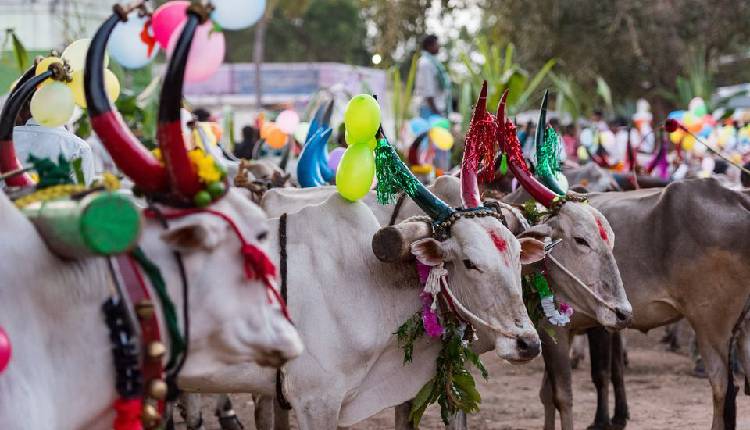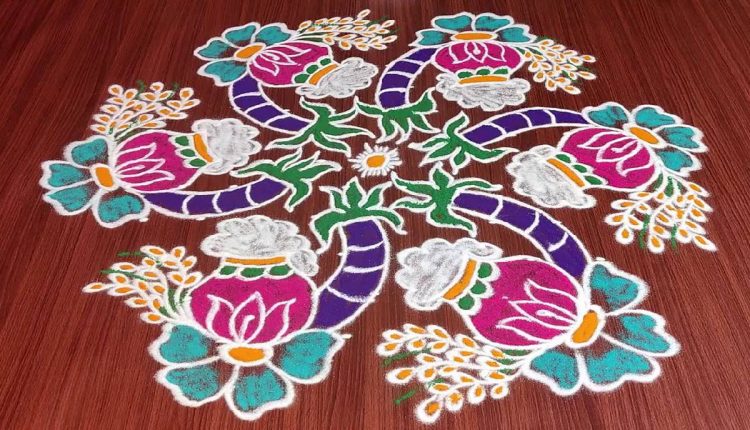The Tamil Nadu state observes the Pongal festival with great splendour and flamboyance. Undoubtedly one of the most significant occasions of the year to the local residents is an event that honours the harvest season. People are immersed in the four-day celebrations, adorning their residences, purchasing new clothes, braising festive delicacies, and exchanging Tamil Pongal wishes. So, if you’re interested in learning more about Pongal, here’s a quick introduction to the Pongal universe. It may obviously give some amazing ways to celebrate Pongal.
How the Pongal celebration works:
The First Day: Bhogi
Lord Indra, the god of rain, is honoured on Pongal’s first day. On this day, the Bhogi Mantalu routine is also performed. Every household item that is no longer useful is burned on a bonfire on this day. The bonfire is constructed from cow manure cakes as well as wood.
You may also like: 6 Best Places to Celebrate Pongal in Tamil Nadu
The second day – Thai Pongal
This day will be devoted to the Sun Lord. Families prepare a dish called Pongal on this occasion. Rice, milk, jaggery made from green gramme (mung), spices, nuts, as well as dried fruits are combined in a clay pot. Following the serving of the Pongal to the Lord of the Sun, family members and neighbours gather to distribute their Pongal. Another crucial component of this day is the Kolam for Pongal. On this day, lime powder is used to draw traditional designs by hand at the front doors of homes. The auspicious drawing known as kolam is performed only after taking a bath, and it must be done first thing in the morning.
The third day – Mattu Pongal

Mattu Pongal, which is observed on the third day, honours cows. The worship of cows and cattle includes adorning them with bells, corn sheaves, as well as garlands. Lord Shiva is said to have sent a bull once with a signal to the Earth, instructing them to get an oil massage but also bath regularly and to eat maybe once every month. Inadvertently, the bull declared that everyone should eat every day and take an oil bath once every month. Lord Shiva was enraged, and he despised the bull to plunge into the fields in order to assist individuals to produce more food.
The fourth day – Kaanum Pongal
Kaanum is the final day of Pongal (or Kanu). The women of the home perform a ritual and offer prayers for the well-being of their brothers on this day. In the courtyard, the remaining Pongal sweets and other foods are spread out. Along with sugar cane, betel leaves, as well as betel nuts, they are arranged on a turmeric leaf that has been cleaned.
Ways to celebrate Pongal:
Participate in drawing Pongal Kolams
Rangolis or kolams are yet another important Pongal traditional practice. These conventional and colourful floor decorations will bring the holiday spirit into your home while bathing it in beautiful colours and tones. Draw two elaborate kolams or rangolis: one larger and one smaller, one in front of the main entrance and then one in front of the puja room. To add a joyful feel to a Pongal-themed corner of your home, draw a simple pot as well as sugarcane expressive kolam.
Decorate your home with flowers
Vibrantly coloured flowers, such as marigolds, can be used in a variety of inventive ways in home decor. They quickly spruce up your place with little effort. With marigolds and Ashoka or mango leaves, try making a thoran or front door hanging. You could also sketch a Pongal pot filled with flowers.
Set up the table for a festive atmosphere
The main focus of Pongal is the unique festival fare that we prepare and offer to guests, such as sweet treats and savouries. As a result, trying to set the table before welcoming guests becomes critical. Place an elegant centrepiece that captures the true spirit of the festival. Spread a brightly coloured cloth on the table and bring out your finest china. If you own silverware and perhaps even gold-plated bowls, you can use them to serve celebrations specialities such as Sakkara Pongal as well as coconut and til (sesame seed) laddus. Alternatively, you can add a rustic feel by providing your confections in cane and perhaps even bamboo baskets.
Travel while the festival is on
If you plan to travel during the festival, look for locations that allow you to truly immerse yourself in the festival’s vibrant colours. Madurai, Tamil Nadu, Thanjavur, Tamil Nadu, Gujarat, Punjab, Amritsar, Mysore, Karnataka, Udupi, Karnataka, Hyderabad, as well as Telangana, are among the places where the Pongal, Bihu, Lohri, as well as Makar Sankranti festivals, are commemorated with zeal. Throughout this time of year, Assam, the state, celebrates Magh Bihu with great zeal.
We will be delighted to have your thoughts and feedback. Please write to us at [email protected]
Follow Life and Trendz on Instagram: https://instagram.com/lifeandtrendz?igshid=Yzg5MTU1MDY=
Facebook: https://www.facebook.com/lifeandtrendz
Twitter: https://twitter.com/LifeandTrendz


Comments are closed.